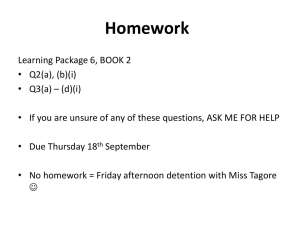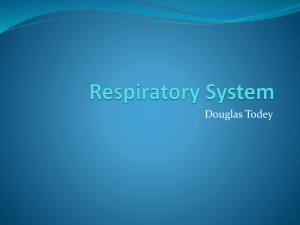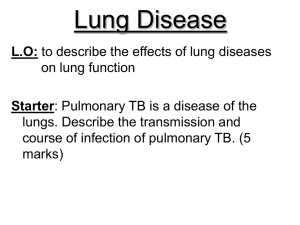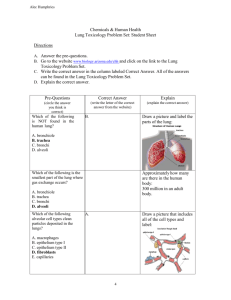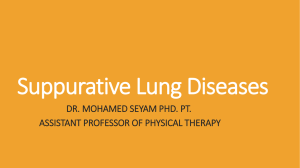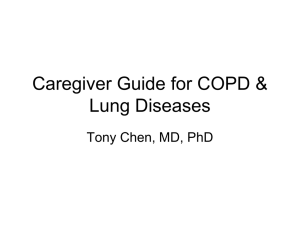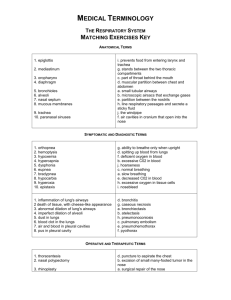Past Exam Question
advertisement
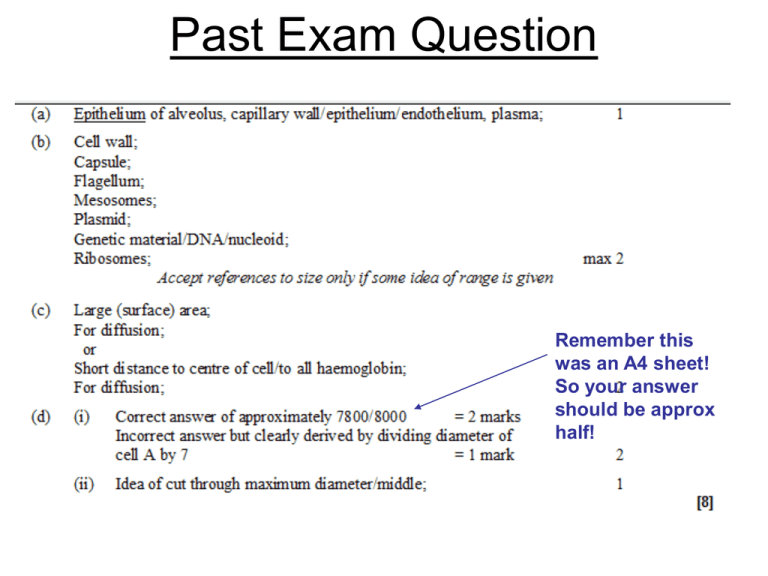
Past Exam Question Remember this was an A4 sheet! So your answer should be approx half! Ventilation - Inspiration External intercostals contract Lung volume increases Internal intercostals relax Ribs pulled up and out Diaphragm flattens Atmospheric pressure greater Lung pressure less INSPIRATION – air forced into lungs Ventilation - Expiration Internal intercostals contract Lung volume decreases External intercostals relax Ribs move down and in Diaphragm relaxes into ‘dome’ Lung pressure greater Atmospheric pressure less EXPIRATION – air forced out of lungs Label the Lungs Tuberculosis Bacteria inhaled by person not immune to it Bacteria start to reproduce in upper lung where plenty of oxygen Usually in young children Primary Infection Immune system responds, phagocytes arrive and ingest bacteria Lymph nodes that drain area of lungs become inflammed and enlarged – Post-Primary Infection (may not happen) In healthy, more resistant people Few symptoms and the infection is controlled, but some bacteria remain Many years later bacteria re-emerge in a second infection More difficult to control. Lung tissue damaged, scar tissue forms Lung tissue and blood coughed up,without treatment can fatally spread throughout body Lung Structure Structure Trachea Bronchi Bronchioles Alveoli Features • Supported by c-shaped rings of cartilage • Lined with cilliated epithelial cells to sweep mucus up to throat • Goblet cells produce mucus to trap dirt & microbes • Larger branches supported by cartilage, less in smaller • Lined with cilliated epithelial cells to sweep mucus up to throat • Goblet cells produce mucus to trap dirt & microbes • Walls are made of muscle and epithelial cells • Muscle allows them to constrict to control air flow to alveoli • Tiny air sacs (100-300μm in diameter) • Lined with epithelial cells • Membrane is gas exchange surface • Contain collagen and elastic fibres (stretch and spring back) TB Exam Question (b) After 4 minutes of exercise, the breathing rate was 20 breaths per minute. Explain how you could use this information and the graph to calculate tidal volume. (c) When a person starts to breathe out, the percentage of oxygen in the air first exhaled is the same as the percentage of oxygen in the atmospheric air. Explain why. Answers (a) Immediate/rapid increase, steady rise and plateau clearly identified; Ignore references to rest period if clearly identified as such 1 (b) Find value of pulmonary ventilation from graph / 26-28; Divide by breathing rate/20; 2 (c) Air is from nose/trachea/bronchi/not been in alveoli/dead space; Gas exchange/diffusion only in alveoli / not in these structures; 2


